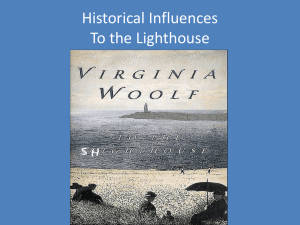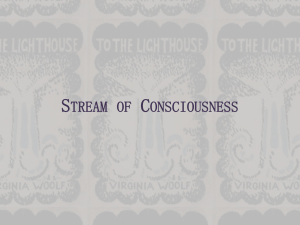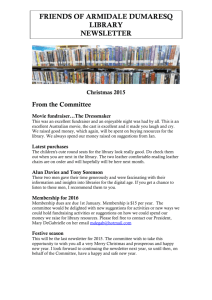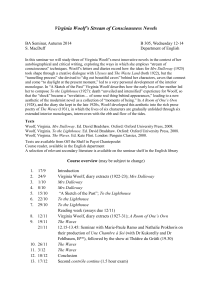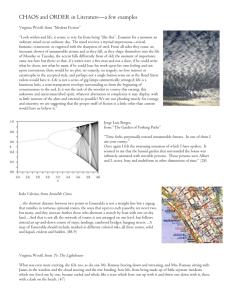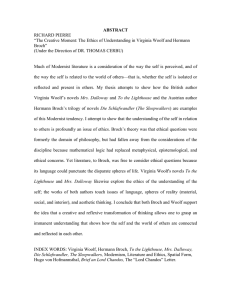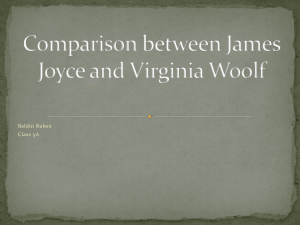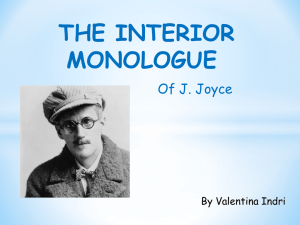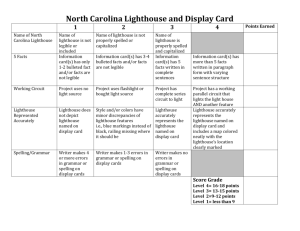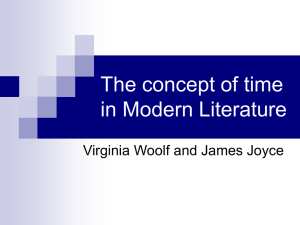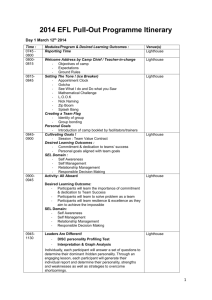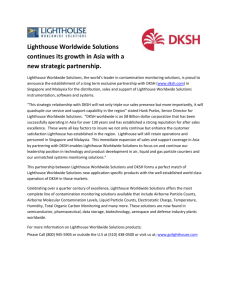Virginia Woolf - IIS Alessandrini
advertisement
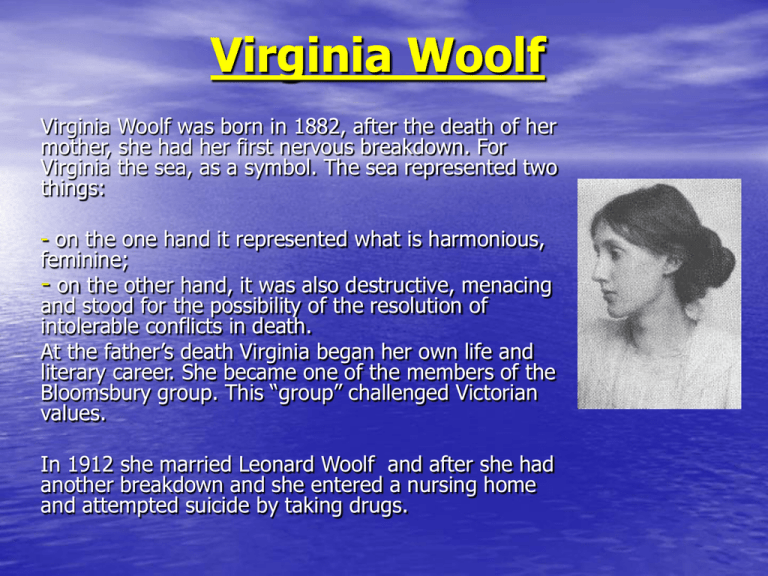
Virginia Woolf Virginia Woolf was born in 1882, after the death of her mother, she had her first nervous breakdown. For Virginia the sea, as a symbol. The sea represented two things: - on the one hand it represented what is harmonious, feminine; - on the other hand, it was also destructive, menacing and stood for the possibility of the resolution of intolerable conflicts in death. At the father’s death Virginia began her own life and literary career. She became one of the members of the Bloomsbury group. This “group” challenged Victorian values. In 1912 she married Leonard Woolf and after she had another breakdown and she entered a nursing home and attempted suicide by taking drugs. The Second World War increased her anxiety and she became haunted by the terror of losing her mind. She chose the only possible death for her, “death by water” and drowned her self in the river Ouse. Her main works are “Mrs Dalloway” and “To the Lighthouse”. The modern novel reflected the moral and psychological uncertainty of the age. The influence of the new scientific and psychological ideas open a new concept of novel: • the plot isn’t well structured; • born a new concept of time because the passing of time is not necessary to • reveal a character it can be unfolded in the course of a single day; the story is characterize by analysing character’s consciousness. The twentieth-century writers understood it was impossible to the reproduce the complexity of the human mind using traditional techniques and created a new method. They adopted the interior monologue to represent, the unspoken activity of the mind. Joyce and Virginia use two different techniques of interior monologue: • JOYCE: used the direct interior monologue where the character’s thoughts flow freely, thanks to his masterpiece “Ulysse” we can understand this technique; he, with the use of “Epiphany”, (his peculiar technique) led the language break down into a succession of words without grammar connections or punctuation. • WOOLF: used the indirect internal monologue when the narrator never lets the character’s thoughts flow without control and maintains logical organisation; she used punctuation or grammar connections to bring to the reader the idea of a flux in the event. To the Lighthouse On of the most interesting aspects of the novel is its treatment of time. Infact the story describes only one day because the character’s thought is dilated through the technique of indirect interior monologue. She is interested in impressions of the characters who experience these events and she is concerned about female subjectivity and this made her a heroine for many feminists. Virginia Woolf use the point of view of characters themselves, speaking from their minds. Three main images dominate the symbolism of “To the Lighthouse”: the journey, the sea and to the lighthouse. The idea of alternation of light and darkness, which is peculiar to the lighthouse corresponds to the alternation between external events and hidden interior realities. The plot: “it is of the story of a trip to the lighthouse organised by family Raimsays. Who are spending the holidays in the island Hebrides. The idea of the trip is proposed by James, one of Mrs Ramsay’s children but the journey is postponed because of bad weather” . I analysed this extract that speak about Mrs Ramsays knows that the trip to the lighthouse will not take place and she doesn’t know how to tell her son James. Because he will remember this disappointment forever. In the mean time the lighthouse lights up and she starts thinking, knitting.
